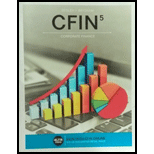
Weighted Average Cost of Capital (WACC) is the required
An optimal capital structure of a company is a mix of debt, equity and preferred stock which can be used to maximize the company’s stock price. Therefore, a target proportion of capital structure and cost of each financing can be used to determine the WACC of the company.
Here,
Proportion of debt in the target capital structure “
Proportion of preferred stock in the target capital structure “
Proportion of equity in the target capital structure “
After tax cost of debt, preferred stock,
Marginal Cost of Capital (MCC) is the weighted average cost of capital for the last dollar raised in new capital. MCC of the company remains constant for some time after which it increases. This depends on the amount of additional capital raised and eventually increases as the cost of raising new capital is higher due to flotation cost. This is mostly evident in case of cost of equity, where first the retained earnings are utilized by the firms to meet their target capital structure and any excess fund required is raised through new equity. So, as new equity is added to the fund, the marginal cost of raising the fund also increases.
The target capital structure of the company is 20% debt, 30% preferred stock and 50% equity.
After tax cost of debt is 3.5%, cost of preferred stock is 6%, cost of retained earnings is 10.2% and cost of new common equity is 12.4%. The company needs to raise $220,000 and expects to generate $100,000 in retained earnings.
Want to see the full answer?
Check out a sample textbook solution
 EBK CONTEMPORARY FINANCIAL MANAGEMENTFinanceISBN:9781337514835Author:MOYERPublisher:CENGAGE LEARNING - CONSIGNMENT
EBK CONTEMPORARY FINANCIAL MANAGEMENTFinanceISBN:9781337514835Author:MOYERPublisher:CENGAGE LEARNING - CONSIGNMENT
